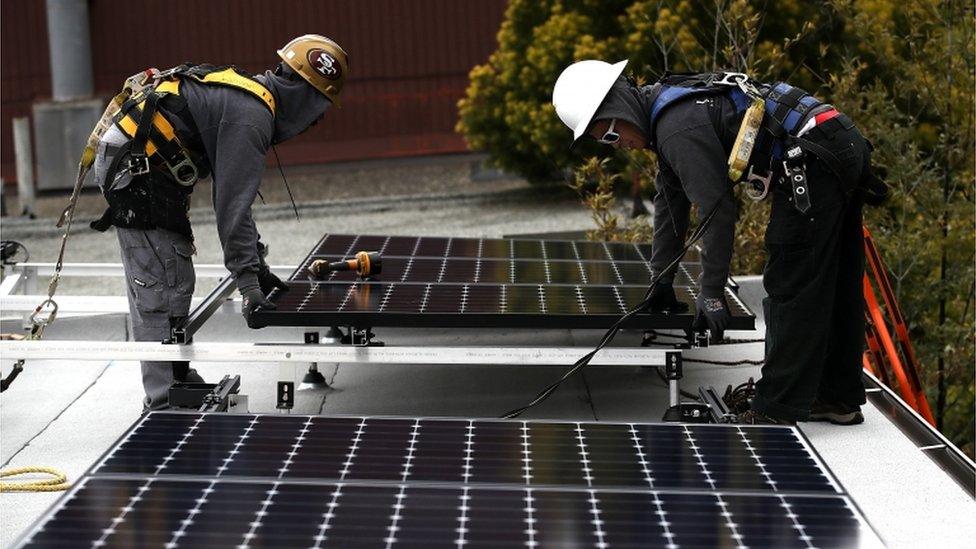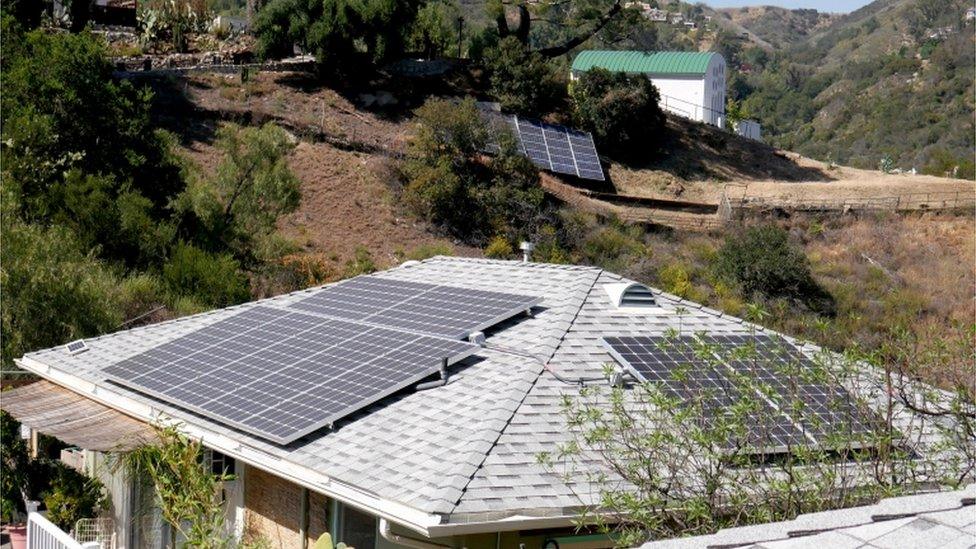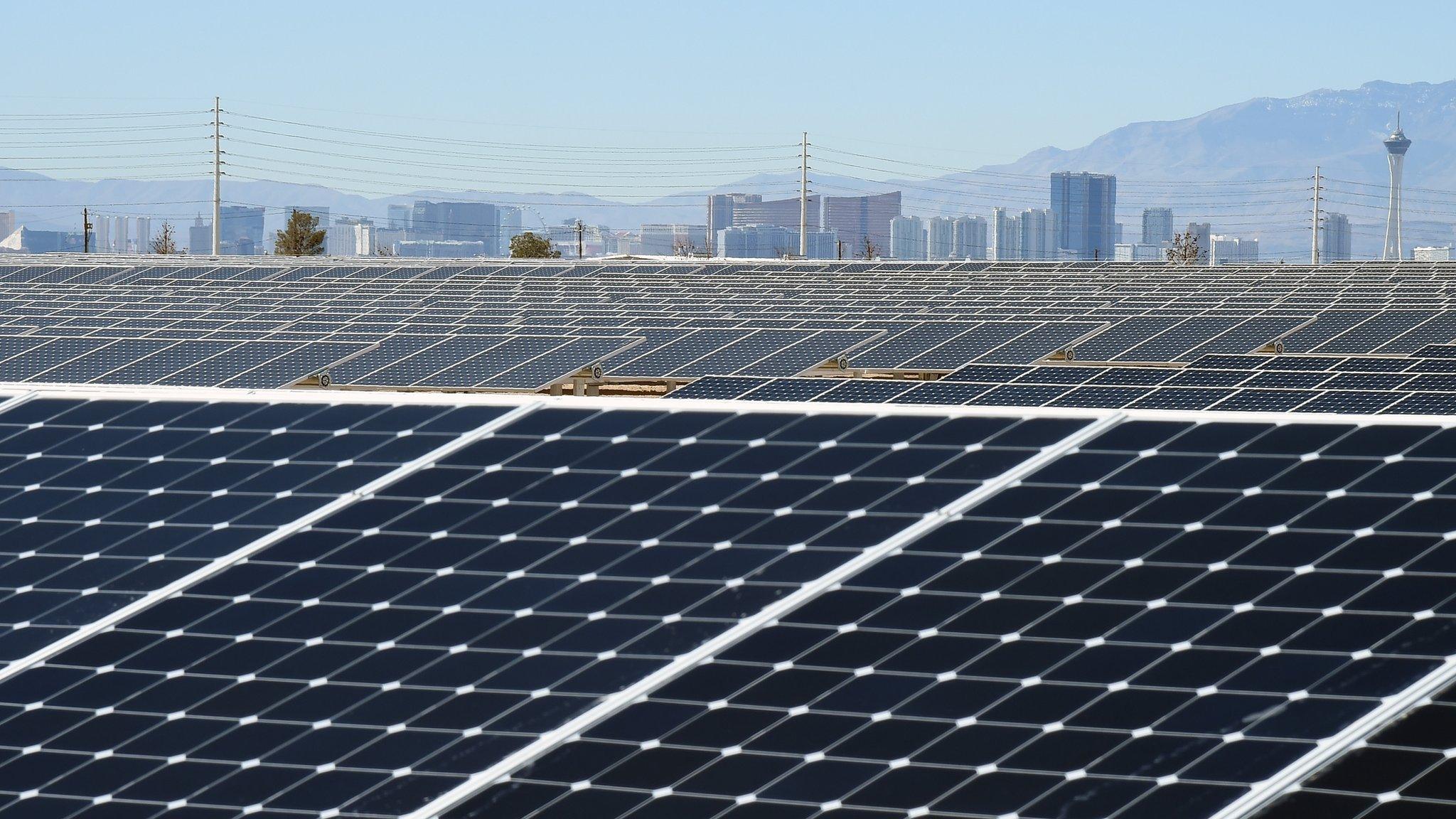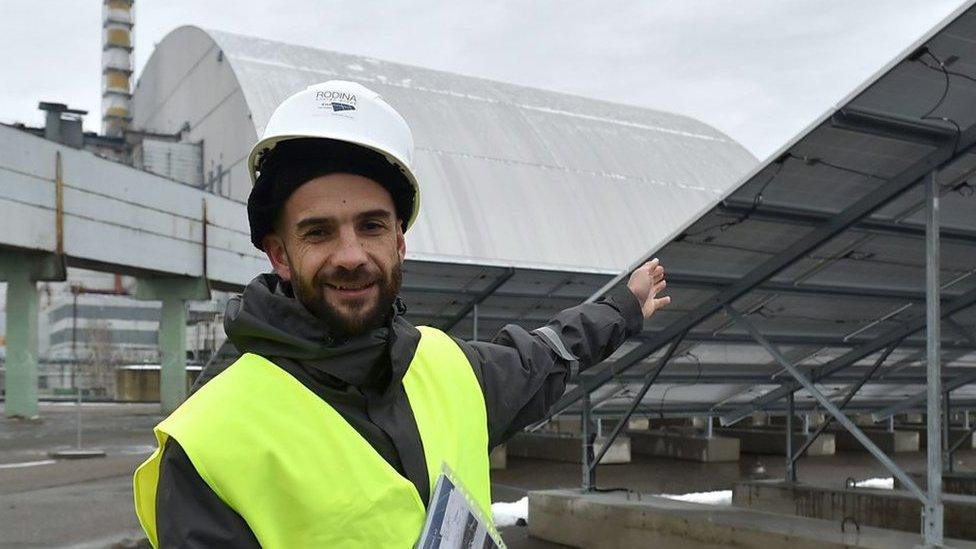California becomes first US state to mandate solar on homes
- Published

Officials say solar energy will more than pay for itself, and homeowners could see significantly lower utilities costs per month
California has become the first US state to mandate solar panels on new homes and apartment buildings built after 1 January, 2020.
The California Energy Commission unanimously approved the plan, making it the state's next big step towards ending greenhouse gas emissions.
State law already requires that 50% of all electricity comes from non carbon-emitting sources by 2030, external.
The mandate still requires approval from the Building Standards Commission.
Critics have been quick to note that the solar panel mandate will add between $8,000 (£5,900) and $12,000 to a home's cost.
The Energy Commission estimates, however, that homeowners will only see an additional $40 to monthly mortgage payments.
At the same time, the commission said they will save $80 on heating, cooling and lighting costs per month.
The new mandate does offer exceptions where solar power is not feasible or cost effective, such as homes located entirely under shade.
Builders will have the option of adding solar panels to individual homes, or building shared power systems for a group of homes.
Current homeowners would not be required to add solar to existing homes, though many in the state have done so using government rebate programmes, external.
California has invested over $42m in solar energy to date, and the mandate will likely give a further boost to the solar industry statewide.

California has invested over $42m in solar energy to date
The Solar Energy Industries Association (SEIA) already ranks California as the top state in the US when it comes to solar energy.
Nearly 16% of the state's electricity last year came from solar.
Abby Hopper, SEIA president, said on Twitter that California's mandate demonstrates "that promoting home solar makes sense".
The California Building Industry Association has been working with the Energy Commission on the new standards for the past decade, according to ABC News, external.
The Building Standards Commission is expected to make a decision later this year.
How Sharon turned her life around
Lynn Jurich, co-founder of solar installation company Sunrun, told the New York Times, external that large market expansions like this make it "very cost effective to do".
"There's also this real American sense of freedom of producing electricity on my rooftop," Ms Jurich told the Times.
"And it's another example of California leading the way."
California is already ahead of schedule with its long-term energy goals: the California Public Utilities Commission reported that they will likely meet the 2030 goal 10 years ahead of schedule, external.
- Published20 November 2017

- Published22 September 2017

- Published29 April 2018
